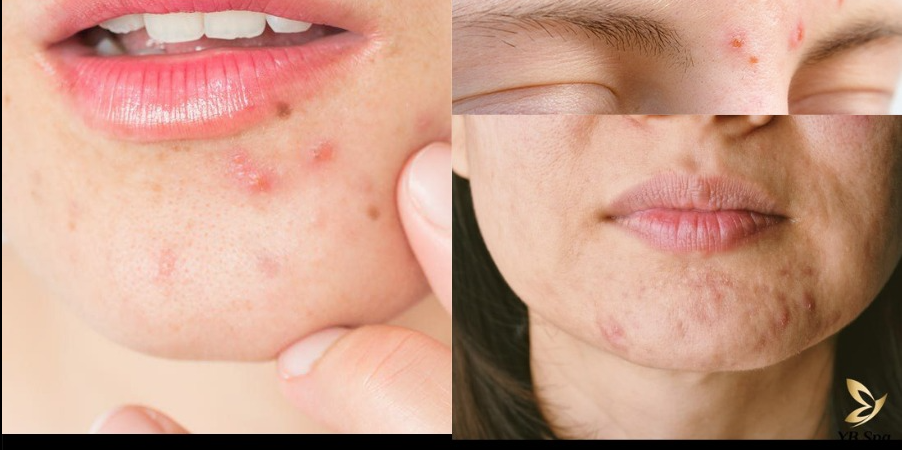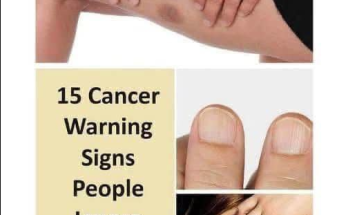What does the location of acne on the face say about your health?
The location of acne on the face is a warning sign of many potential and worrying health problems that need to be recognized early. Below is the meaning of acne location and the cause of acne in each location on the face.
1. Acne on the forehead – what does the location of acne say?
The location of acne on the forehead shows that the body is accumulating too many toxins. The cause may be due to liver problems, unstable digestive system, stress, prolonged stress, etc. In addition, unclean skin hygiene or the use of styling and hair care products can also cause acne on the forehead, hidden acne, inflammatory acne, hormonal acne, calluses, back acne, warts, acne without core, red acne on the skin… on the forehead.
Some easily recognizable signs when acne appears on the forehead can be mouth ulcers, red tongue… This condition not only causes discomfort when eating and drinking but also affects sleep.
To limit acne on the forehead, you can apply the following measures:
Cooling down, cooling the liver: Drink liver-cooling herbs such as corn silk tea, lotus seeds… every day, instead of filtered water.
Control the amount of sugar in your diet: Limit foods high in sugar, prioritize low-sugar dishes and sweets.
Add green vegetables: Eat lots of green vegetables (cabbage, broccoli…) to help the digestive system work more smoothly.
Limit stimulants: Minimize the use of beer, alcohol, coffee, and other stimulants to avoid overloading the liver.
2. Acne on the eyebrows – what does the location of the acne say?
Acne on the eyebrows is mainly due to poor skin hygiene, not clean, causing clogged pores or cosmetic allergies. Sometimes, acne in this area can come from internal health problems such as: poor liver/gallbladder function, unstable blood circulation, lack of water, etc.
3. Acne in the temple area
The temple area near the hairline is also very prone to acne. The cause may be due to the use of cosmetics, irritating shampoos, a diet high in fat, eating processed fast food, etc. What causes acne on both sides of the temples? In some cases, acne on the temples can be a warning sign of problems with the gallbladder and bile.
How to treat acne on both sides of the temples:
Limit canned foods and fast foods: These foods often contain large amounts of unhealthy oils and fats, which can easily clog pores and lead to acne in the temple area.nSupplement vegetables and fruits rich in vitamins and minerals: Vegetables and fruits provide essential nutrients to help balance hormones and increase skin resistance, supporting the acne healing process. Avoid eating too many animal organs: Organs contain a lot of saturated fat and cholesterol, which can increase the risk of acne. Limiting this food group helps the skin to be more clear and healthy.
4. Acne on Both Cheeks: Causes and Health Implications
- Acne on both cheeks is common and can include cystic acne, pustules, and other types of breakouts.
- Causes:
- Direct exposure to dirt and harmful UV rays.
- Unhealthy habits such as:
- Frequently touching the face.
- Wearing makeup often.
- Not covering the face properly when going out.
- These factors create conditions for bacteria to thrive, leading to acne.
Acne on the Left Cheek
- Health implications:
- According to Face Mapping, acne on the left cheek is linked to liver issues, such as:
- Weak liver function.
- Hepatitis.
- Poor liver function affects the body’s detoxification, leading to toxin buildup and acne.
- According to Face Mapping, acne on the left cheek is linked to liver issues, such as:
- How to treat it:
- Limit alcohol and stimulants (e.g., beer, wine, coffee).
- Add liver-friendly foods to your diet:
- Bitter melon.
- Cucumber.
- Squash.
Acne on the Right Cheek
- Health implications:
- Often caused by bacteria and dirt buildup.
- According to Face Mapping, it can be linked to lung problems.
- High-frequency smoking increases the risk of acne in this area.
- How to treat it:
- Eat foods that benefit the body (e.g., tomatoes, apples, garlic).
- Limit sugary foods (e.g., candy, cakes, milk tea).
- Quit smoking (gradually reduce and aim to quit completely).
- Wake up early and breathe fresh air to improve lung function and support detoxification.
5. Acne on the Nose: What Does It Indicate?
- Common types:
- Whiteheads, blackheads, small pimples, or red swollen pimples.
- Health implications:
- May signal issues with the heart and lungs.
- Other causes:
- Oily skin.
- Large pores.
- Poor skin cleansing, leading to blackheads and whiteheads.
How to treat acne on the nose and support heart & lung health:
- Increase intake of green vegetables and fresh fruits to aid detoxification.
- Consume fatty fish and omega-3-rich nuts to reduce inflammation and improve heart and skin health.
- Limit spicy and fermented foods (e.g., pickles, kimchi, pickled eggplant) to avoid overloading the liver and stomach.
- Regularly check blood pressure and cardiovascular health for early detection of potential heart or lung issues.
6. Acne on the jaw – what does the location of acne say?
Acne on the jaw can grow individually or in clusters. This acne location is a warning sign that the body’s immune system and resistance are declining. Poorly functioning lymphatic system hinders the process of eliminating toxins, leading to acne.
7. Where is acne most dangerous?
Acne can appear in many places on the face, accompanied by specific causes as shared above. In particular, the most dangerous and worrying areas of acne are the nose, mouth, eyebrows and temples. The location of acne in these areas is often directly related to the health of internal organs such as the liver, intestines, lungs, kidneys, etc. If large, swollen pustules are not treated properly and promptly, they can lead to more serious complications later on.
8. Things to note about the location of acne on the face
The location of acne on the face can be a warning sign of abnormal health problems. Therefore, no matter where the acne is, you should take the initiative to go for a medical examination to be diagnosed and treated promptly, avoiding dangerous complications later. In particular, you should not be subjective in the following cases:
Acne develops into red, pus-filled, swollen and painful inflammatory cells, this condition shows no signs of improvement over time.
Acne develops out of control, spreading to other areas of the body, this can be a warning sign of chickenpox, allergies or other skin diseases.
Acne with symptoms of jaundice, high fever, chest pain, painful urination, yellow eyeballs,…



